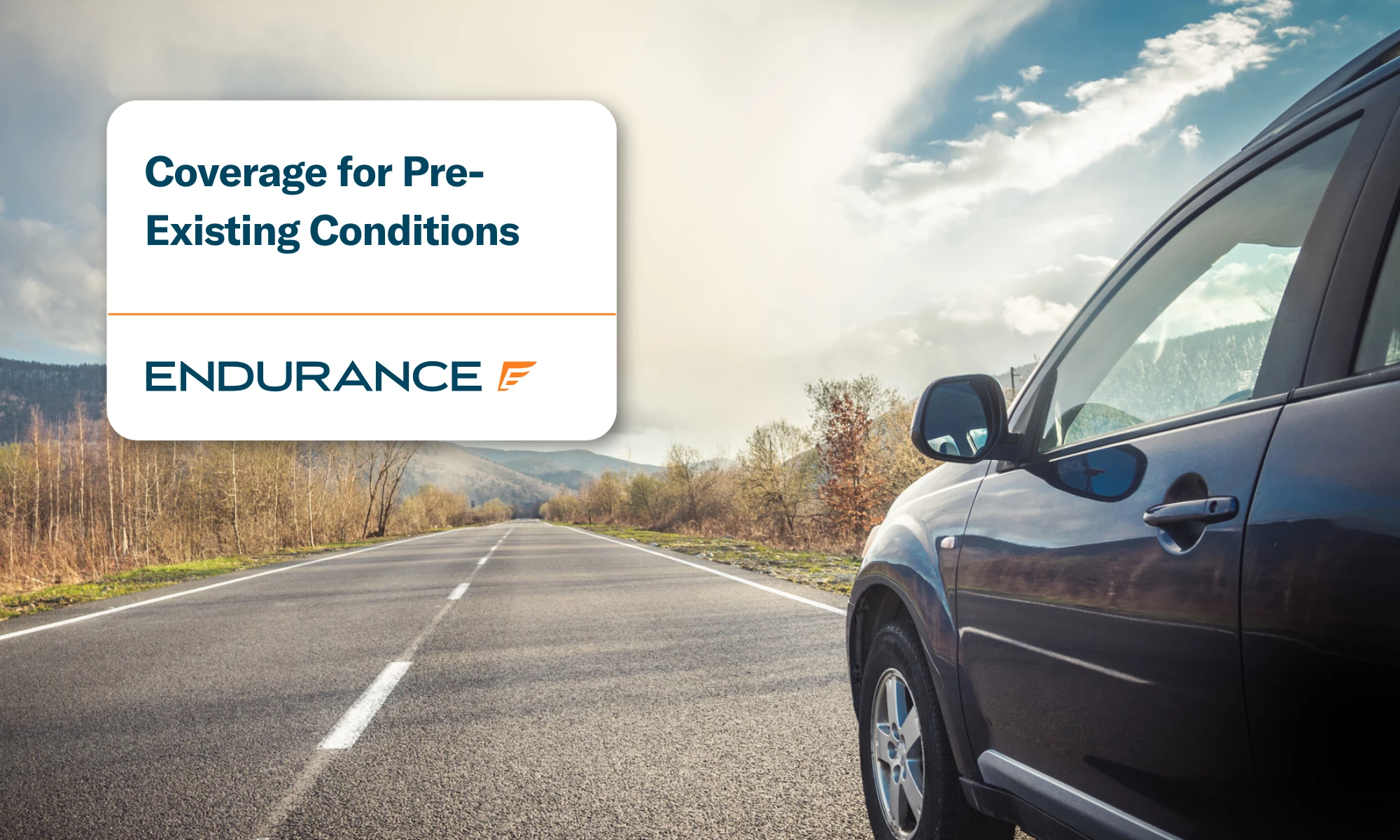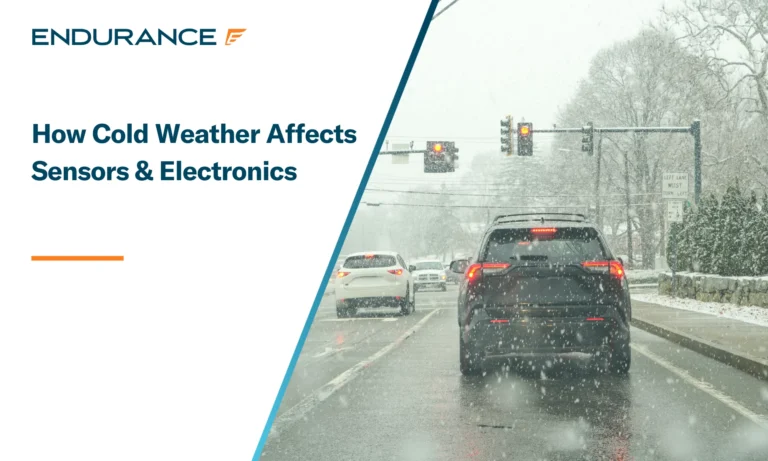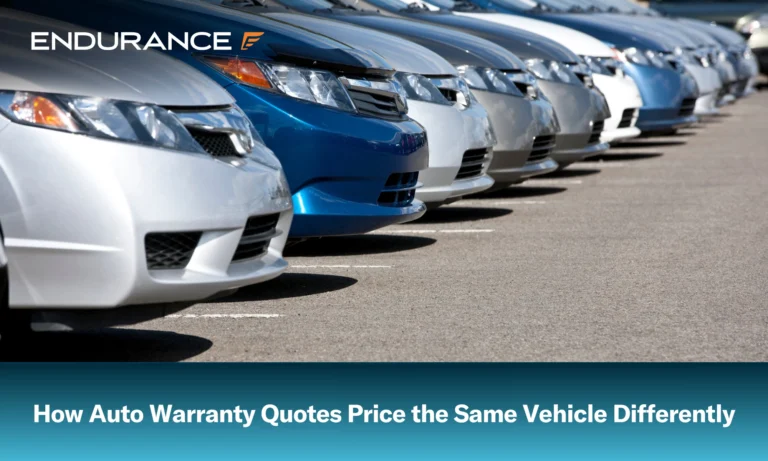¿Una garantía extendida cubre condiciones preexistentes y reparaciones?

Antes comprar una garantía extendida para el automóvilUna pregunta crucial que suele surgir es: ¿Cubrirá los problemas que ya tiene su auto? Si su alternador falla o la luz de verificación del motor lleva encendida semanas, podría estar enfrentando lo que se conoce como... condición preexistente en un vehículo, y eso puede marcar la diferencia cuando se trata de la cobertura de la garantía del automóvil.
Desafortunadamente, las condiciones preexistentes a menudo están excluidas de una garantía extendida o contrato de servicio de vehiculo (VSC) porque este tipo de contratos de servicio generalmente ofrecen protección financiera contra futuras averías. Si la garantía extendida del auto cubre condiciones preexistentes, sería como llamar para añadir un seguro médico de camino al hospital o contratar un seguro de auto después de un accidente. Simplemente no es una decisión financieramente sensata para el proveedor.
Echemos un vistazo más profundo a lo que realmente significa tener una condición preexistente y cómo afecta su plan de protección automotriz.
¿Qué es una condición preexistente en una garantía extendida de automóvil?
Cuando se trata de garantías extendidas de automóviles, una condición preexistente es cualquier problema que su vehículo ya tenga antes de que entre en vigencia la cobertura de la garantía extendida. Si su automóvil hace ruidos extraños, tiene luces de advertencia encendidas o ya sabe que algo no está funcionando bien, ese problema probablemente cuente como preexistente, lo que a menudo encabeza la lista de exclusiones de la garantía.
A continuación se muestran algunos ejemplos comunes:
- Su el alternador está fallando, y las luces han comenzado a atenuarse
- El luz de verificación del motor Ha estado activo durante semanas (pero lo has estado ignorando)
- Hay una fuga en la transmisión, y ha estado patinando
- Su El aire acondicionado dejó de soplar aire frío El verano pasado y todavía no se ha solucionado.
- El motor de arranque ha estado funcionando mal y, a veces, su automóvil no arranca.
Si el problema ya existía antes de que comenzara tu plan de protección vehicular, o muestra indicios claros de que existía, probablemente no esté cubierto. Por eso es tan importante obtener cobertura antes de que surjan los problemas.
¿Puede usted presentar una reclamación por una condición preexistente?
La mayoría de los proveedores de garantías extendidas para autos son estrictos: si el problema existía antes del inicio de la cobertura, no se puede reclamar. Pero, como en todo en el mundo automotriz, existen matices.
Esto es lo que puede influir en la aprobación de una reclamación:
- Cuando empezó el problema: Si un El mecánico puede probar el problema Si se desarrolló después del inicio de su contrato, podría estar cubierto. Pero si es evidente que el problema ya existía, como signos de desgaste continuo, es poco probable que se apruebe.
- Resultados de la inspección: Algunas compañías de garantía extendida exigen una inspección del vehículo antes de que comience la cobertura. Si su auto pasa la inspección exhaustiva, este paso adicional podría ser beneficioso para usted al presentar una reclamación.
- Periodos de espera: Muchos planes, incluidos los de Garantía EnduranceHay un período de espera. Esto es útil porque te da tiempo para asegurarte de que el plan que elegiste sea el mejor para tu estilo de vida y presupuesto. Sin embargo, si ocurre una avería mecánica durante este tiempo, podría marcarse como preexistente, incluso si no era evidente antes.
- Registros de mantenimiento: Bien registros de servicio del vehículo Puede ayudar a demostrar que su vehículo estaba en buen estado antes de que comenzara la cobertura. Es simplemente otra forma de protegerse al presentar una reclamación.
En resumen, si el problema ya existía antes de registrarte, lo más probable es que no esté cubierto.
¿Cómo saben los proveedores de garantía si un problema ya existía?
Las compañías de garantía de automóviles tienen algunas formas confiables de consultar el historial de su automóvil antes de aprobar o rechazar un reclamo de garantía.
1. Inspecciones de vehículos
Aunque la garantía Endurance no lo exige, algunos proveedores de garantía sí exigen una inspección previa a la cobertura, especialmente para vehículos más antiguos o con alto kilometraje. Mecánico certificado por ASE Revisa su vehículo en busca de signos de desgaste, daños o problemas. Lo bueno es que, si todo está correcto y algo sale mal posteriormente, ese informe inicial de inspección limpia puede ser beneficioso. Sin embargo, cualquier hallazgo no estará cubierto.
2. Registros de servicio y mantenimiento del automóvil
El historial de servicio de un vehículo ofrece una visión detallada. Si sus registros muestran que usted mantuvo el mantenimiento rutinario, como cambios de aceite regulares, y que no presentó problemas anteriores, pueden respaldar su reclamación. Pero, ¿qué pasa si hay una anotación sobre problemas que nunca se repararon? Eso es una señal de alerta de una condición preexistente.
3. Periodos de espera
Casi todos los planes de garantía de automóviles incluyen un período de espera antes de que su cobertura entre en vigencia oficialmente. Por ejemplo, Endurance tiene un 30 días de garantía de devolución de dinero Antes de que entre en vigor el contrato de servicio de su vehículo, lo que le da la oportunidad de leerlo detenidamente y asegurarse de elegir el plan que mejor se adapte a sus necesidades y presupuesto. Sin embargo, si algo se rompe durante ese periodo, generalmente se considera una condición preexistente, ya que es demasiado pronto para determinar si el problema ya existía.
4. Informes de diagnóstico
Cuando presenta un reclamo de garantía, el proveedor puede solicitar un informe de diagnóstico de un taller de reparación de automóvilesLos informes pueden incluir detalles como códigos de falla, señales de daños a largo plazo y notas del técnico del vehículo; todo lo cual puede ayudar a determinar si una falla mecánica fue reciente, prevenible o algo persistente.
Los proveedores de garantía de vehículos no esperan que su automóvil esté como nuevo, sin embargo, solo quieren asegurarse de cubrir únicamente problemas nuevos, no aquellos que se han ignorado o no se han tratado.
Cómo evitar el rechazo de reclamaciones debido a condiciones preexistentes
Nadie quiere comprar una garantía extendida para su vehículo solo para descubrir que las costosas reparaciones no están cubiertas al finalizar la compra. Aquí le mostramos cómo protegerse y aumentar las probabilidades de aprobación:
1. Obtenga una inspección del automóvil
Cuando estas comprando un garantía extendida del automóvilAl contratar un seguro, puede considerar obtener una inspección técnica del vehículo para obtener información más precisa. Si bien una inspección previa no es necesaria para los planes de garantía Endurance, puede ser útil para descartar cualquier condición preexistente.
2. Obtenga cobertura con anticipación
El mejor momento para comprar una garantía es antes de que algo salga mal. No esperes a que tu auto empiece a fallar. Para entonces, será demasiado tarde.
3. Manténgase al tanto del mantenimiento
Manténgase al día con los cambios de aceite, la revisión de fluidos y el servicio recomendado por el fabricante. Y guarde esos registros: ayudan a demostrar que su vehículo estaba en buen estado al momento de registrarse.
4. Solucione los problemas conocidos antes de comprar un plan
Si algo ya está roto o falla, primero repárelo. Luego, con un certificado de buena salud, puede solicitar cobertura sin riesgo de rechazo.
5. Comprenda el período de espera
Conozca la duración del período de espera de su plan y evite presentar reclamaciones durante ese tiempo a menos que sea absolutamente necesario. Podría dar lugar a una revisión de condiciones preexistentes.
Un poco de planificación es muy útil. Realizar estos pasos ahora puede ayudarle a garantizar que su cobertura le funcione cuando realmente la necesite.
No esperes a que sea demasiado tarde, protege tu auto ahora
Garantías extendidas para automóviles Están diseñados para brindarle tranquilidad, pero el momento oportuno lo es todo. Cuanto antes obtenga la cobertura, mayores serán sus posibilidades de evitar reparaciones costosas y denegaciones de reclamos por condiciones preexistentes.
El hecho de que su auto tenga una condición preexistente no significa que no califique para la cobertura. Si bien ese componente podría no estar cubierto, miles de otras piezas sí lo están, según su contrato. ahorrándote mucho dinero en reparaciones cubiertas a largo plazo.
En Endurance, le facilitamos encontrar el plan ideal para su vehículo y presupuesto antes de que surjan problemas. Contacte con un asesor de planes confiable y amable llamando. (800) 253-8203 o solicitar una Presupuesto por correo electrónico GRATIS. Tú también puedes tienda en linea para ver recomendaciones y precios de su plan de cobertura ahora.













Alex ha trabajado en la industria de servicios automotrices durante más de 20 años. Luego de graduarse de una de las mejores escuelas técnicas del país, se desempeñó como técnico logrando la certificación de Maestro Técnico. También tiene experiencia como asesor de servicios y gerente de servicios. Leer más sobre alex